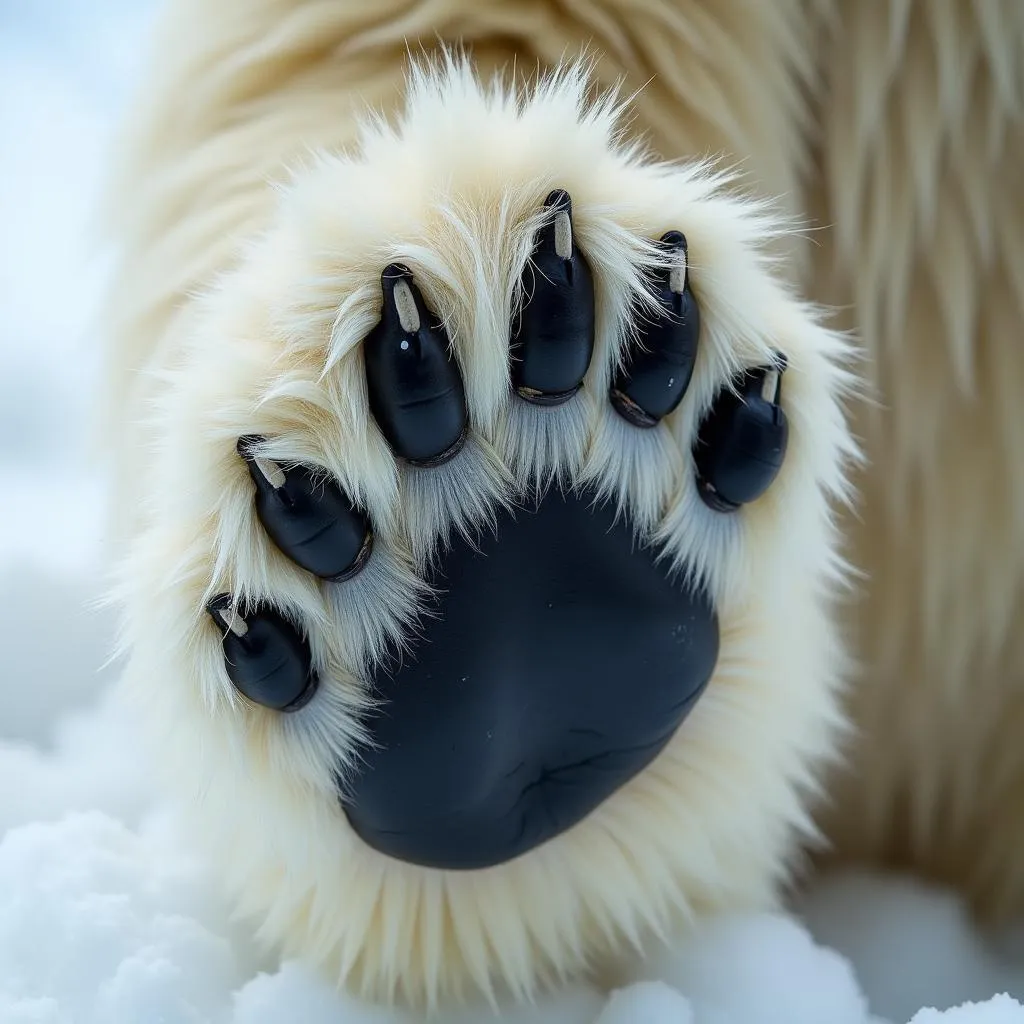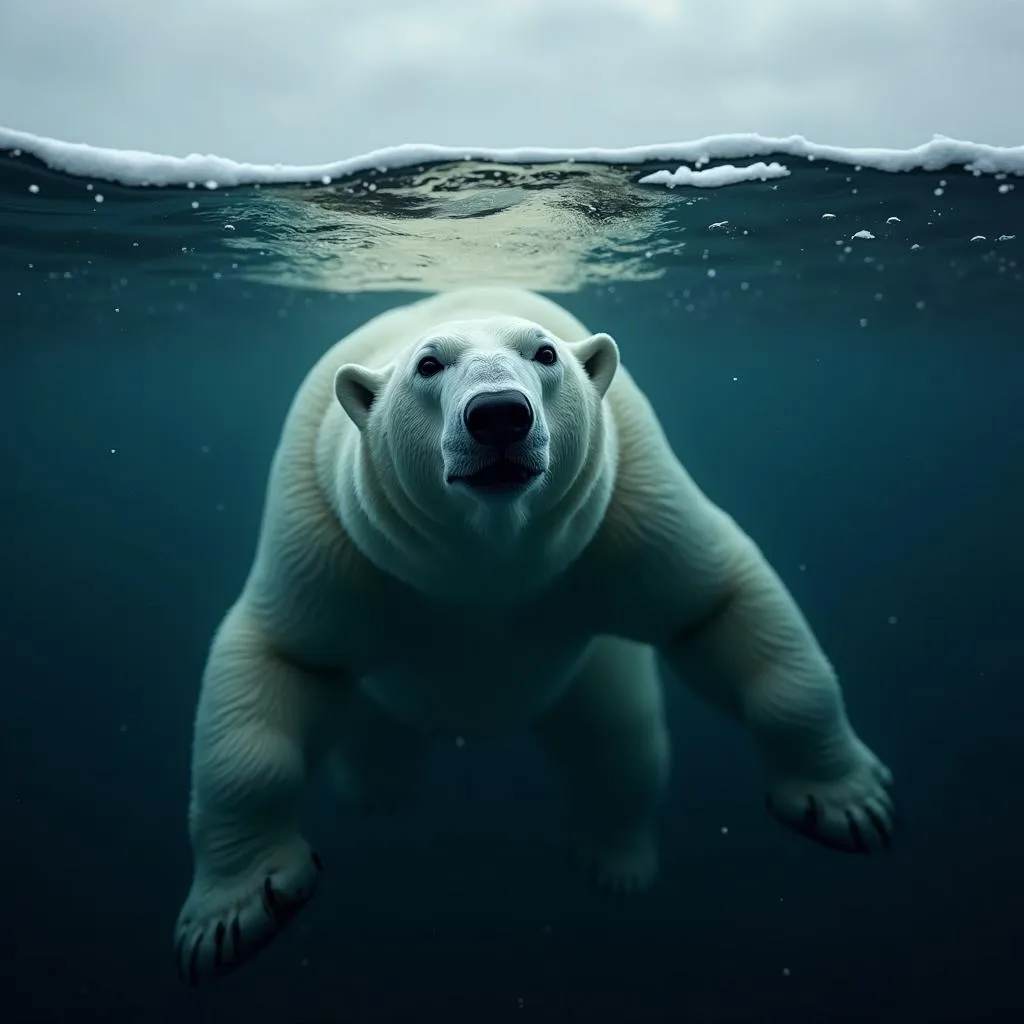You might be surprised to learn that a polar bear’s skin isn’t white like their fur appears to be. In fact, it’s the opposite! Underneath that thick, insulating coat, polar bears have black skin.
 Polar bear with visible black skin
Polar bear with visible black skin
This might seem counterintuitive, but there’s a fascinating scientific reason behind it. Let’s delve into the world of polar bear biology and understand why their skin color is so crucial for their survival in the Arctic.
The Science Behind the Color Black
Polar bears have evolved to thrive in some of the most extreme conditions on Earth. Their black skin plays a vital role in this adaptation. Here’s how:
- Heat Absorption: Black surfaces are excellent absorbers of heat. The dark pigment in their skin, called melanin, helps polar bears absorb and retain heat from the sun. This is particularly important in a frigid environment where conserving body heat is essential for survival.
- Camouflage While Swimming: While their white fur provides excellent camouflage against the snow and ice, their black skin serves them well in the water. When swimming, their dark skin helps them blend in with the dark depths of the ocean, making it harder for seals and other prey to spot them.
 Polar bear swimming in the ocean
Polar bear swimming in the ocean
More Than Meets the Eye: The Structure of Polar Bear Fur
While we’re on the topic of color, it’s important to note that polar bear fur isn’t actually white either. It’s translucent! Each hair strand is hollow and reflects light, giving the appearance of white. This unique structure also contributes to their remarkable insulation.
Beyond Color: Other Fascinating Polar Bear Adaptations
A polar bear’s black skin and translucent fur are just two examples of their incredible adaptations for Arctic life. They also possess:
- A thick layer of blubber: This acts as insulation and an energy reserve.
- Large paws with rough pads and non-retractable claws: These provide excellent traction on ice and snow.
- A powerful sense of smell: This helps them locate seals and other prey from miles away.
 Polar bear family on an ice floe
Polar bear family on an ice floe
Conclusion
The next time you see a picture of a majestic polar bear, remember that their appearance is more than just skin deep. Their black skin, a hidden feature beneath their iconic white coat, is a testament to the power of evolution and a key to their survival in the Arctic. These magnificent creatures never cease to amaze us with their unique adaptations and their vital role in the delicate balance of the polar ecosystem.

